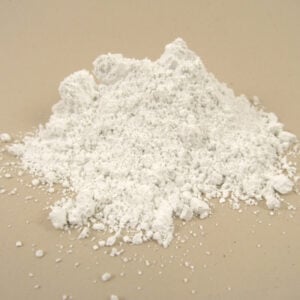
This week’s Mordant Monday explores another well known and important tannin: Cutch. Cutch is a wood dye from Senegalia catechu (formerly Acacia catechu), an acacia species that grows in South and Southeast Asia. The dye is both a colorant, and a traditional medicine. It is also the by-product from the manufacture of “katha”, which is a crystalline substance that is an ingredient in paan or betel nut leaf, which is an Indian mouth freshener and digestive. We’ve never tried paan, but we love cutch for its versatility and deep colors. It’s a sweet-smelling dye and the color yield ranges from a golden yellow to a deep espresso brown. Cutch and Saxon Blue Liquid Indigo turn into an amazing seaglass green (on wool fibers only), and you could get the same effect with a traditional indigo vat and cutch for other fiber types.
This week, we’re pulling swatches from our “dyebrary” to show how the range of cutch from unmordanted fibers to mordanted samples with different modifiers or color changers.
Cutch with no mordant
Since cutch is a strong tannin, it is possible to dye without other mordants. Here we show cutch on cotton canvas at 10% with no mordant.

Mordanted Cutch with a Calcium carbonate modifier
Our local water is slightly acidic and does not contain a lot of minerals. The dyes that love minerals will bloom with the addition of a little calcium carbonate, and sometimes soda ash. The result can be surprising! Shown here is a cotton fabric that was mordanted in Aluminum Acetate and then dyed in 10% cutch, creating a deep golden yellow. The second swatch is the same mordant, same dye of 10% cutch plus 1% calcium carbonate added into the dye bath.

Cutch with Iron: Chocolate and Espresso
Cutch loves iron for very rich and deep brown shades. This next set of colors is Cutch with calcium carbonate, then an Iron post bath at 1%. The third swatch is Iron post bath at 2%.

Cutch with Indigo
For our final examples, we show a trio of wool yarns that were dyed with cutch, then overdyed with Saxon Blue. It’s easy to get a beautiful gradation with a simple overdye.

Enjoy your cutch experiments and see you next week!













I love the color variation that you got with Cutch. I have some in my dye collection that I am definitely going to try. I really hope I can get the peach and the brown – they go together so beautifully. I am relatively new to natural dyeing am I correct in understanding that the percentages are a percent of WOF?
Hello and welcome to the natural dye world! To answer your question: yes, the percentages are on the dry weight of fabric. I hope you have fun with the colors and you’ll probably create some of your own favorites, too!
I have been obsessed with the possibilities of Cutch since last year. I recently tried doing a Calcium Hydroxide bath after dyeing and it turned a wondrously deep terra cotta clay color, leaning almost to brick! It’s truly the most magical plant.
A little calcium can work wonders on many of the dyes! Thanks for your comment and keep enjoying this wonderful dye!